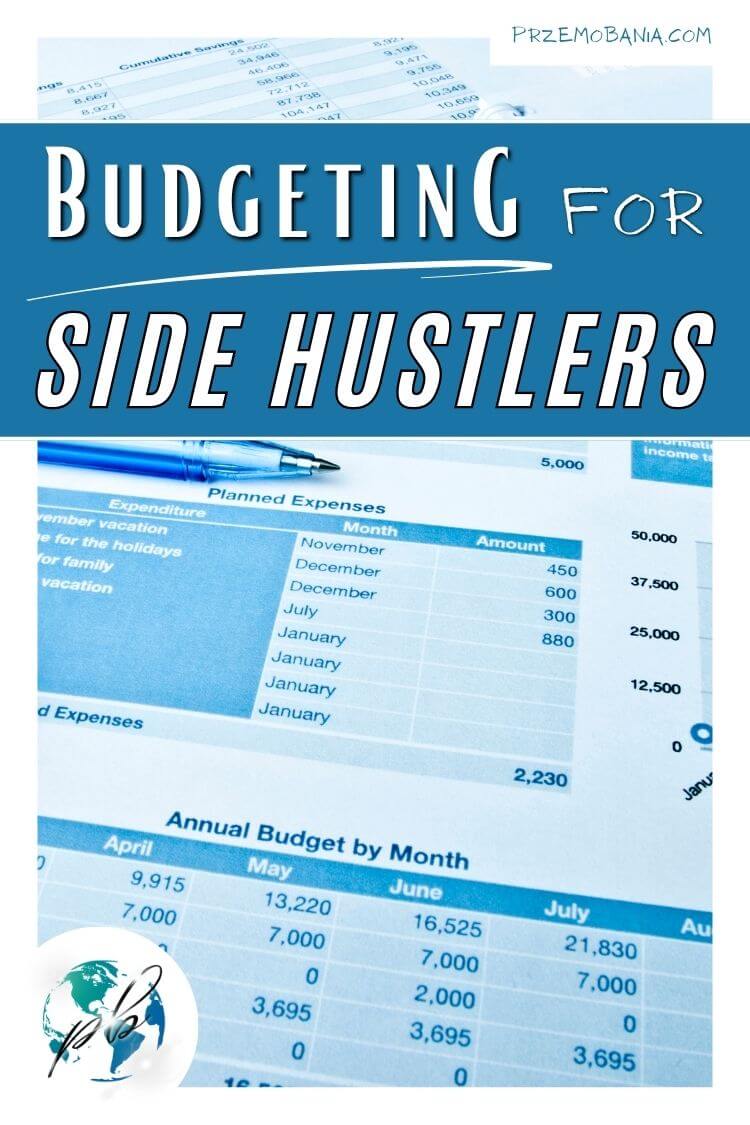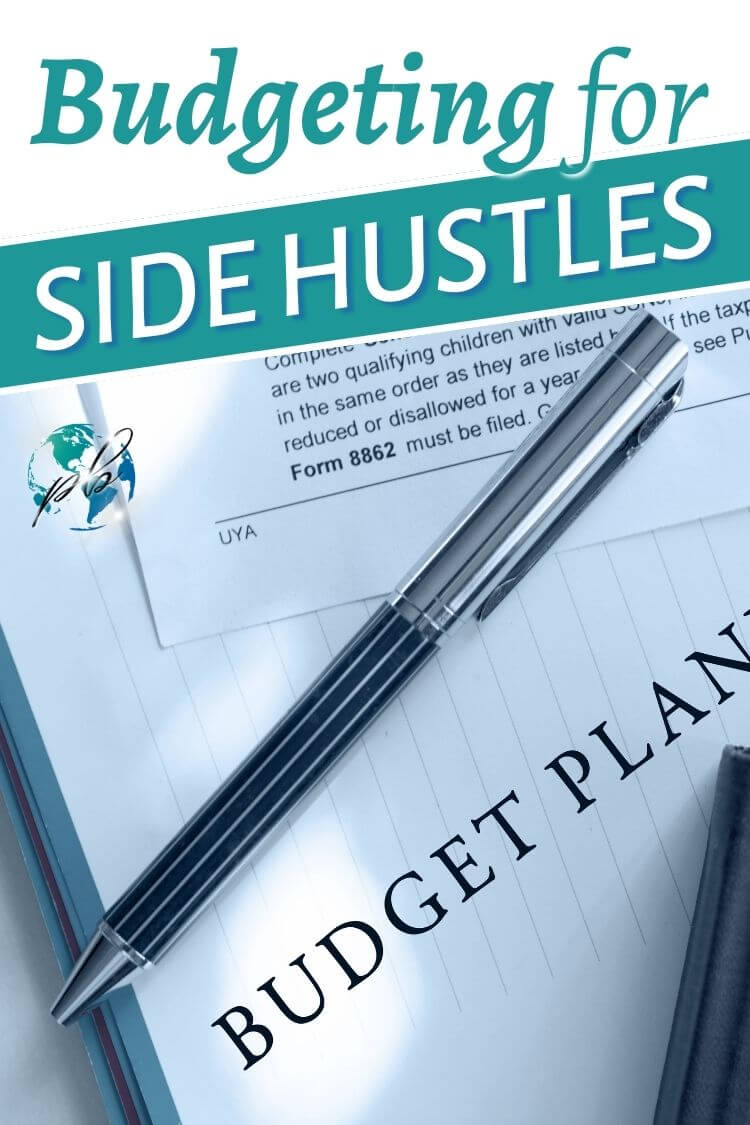Budgeting for side hustlers.
Budgeting for side hustlers means planning and managing finances for your side gig. It involves setting income goals, tracking expenses, allocating funds for reinvestment, saving for taxes, and ensuring you have a financial buffer for slow periods. This allows for sustainable growth.
When it comes to budgeting for side hustlers like myself, it is critical for me to establish a separate financial plan for each endeavor to effectively track my income, my expenses, and my potential growth opportunities.
Side hustling is the practice of earning money outside your main source of income, usually through a part-time job or a small business.
In today’s economy, many people are turning to side hustles as a way to supplement their income and achieve financial stability. Side hustling can provide numerous benefits, such as helping you pay off debt faster, build your savings and investments or simply increase your spending power.
Examples of side hustles include freelance writing, pet sitting, tutoring, selling handmade products online, or driving for ride-sharing services. People from all walks of life can engage in side hustles and earn extra money while pursuing their passions.
Importance of budgeting for side hustlers.
While having a side hustle stack can be an effective way to increase your income, it’s important to remember that it’s not just about how much you make – it’s also about how much you keep. Without budgeting for side hustlers, it can be easy to overspend or neglect important financial responsibilities.
A budget is a plan that helps you manage your finances by tracking your income and expenses. When done correctly, budgeting allows you to make informed decisions about where you spend your money.
Budgeting also helps you save money for emergencies and future goals.
As a side hustler managing multiple sources of income with varying frequencies and amounts, it becomes even more crucial to budget effectively so that no opportunities are missed due to financial mismanagement.
In this article, I will provide you with practical tips on how to create a budget tailored specifically to the unique needs of a side hustler. I will cover everything from understanding your income and expenses to maximizing earnings from your side hustle endeavors while managing finances effectively.
You will explore various ways in which you can track income & expenditures effectively so that you can make informed decisions about where to allocate your resources.
Additionally, I will offer you insights into saving and investing for the future while still managing the present.
By the end of this article, you’ll have a better understanding of how to manage money effectively as a side hustler.

How to understand your income and expenses?
When it comes to budgeting for side hustlers, it’s crucial to have a clear understanding of your income and expenses. This knowledge will enable you to make informed decisions about your finances and create an effective budget plan.
Understanding your income and expenses involves careful tracking and analysis. For income, note down all sources and amounts. This could be sales from a product, freelancing fees, or affiliate income.
For expenses, record all business-related costs. This can include materials, marketing, travel, online services, and more.
Use a spreadsheet or budgeting app to track these over time. Compare income to expenses to see if you’re profitable. Identify areas where you can increase income or decrease costs for better financial health.
Identify your sources of income.
The first step in understanding your income is identifying all sources of revenue. This may include money earned from your full-time job, as well as any additional income streams from side hustles or other ventures.
Write down all sources of income, including the type of work or activity that generates that particular source of revenue.
It’s also essential to determine how often you receive payment for each source of income, whether it’s weekly or monthly, as this information will help you create a more accurate budget plan.
Be sure to include any irregular sources of cash flow, such as bonuses or seasonal work.
Calculate your monthly expenses.
Once you’ve identified your sources of income, it’s time to calculate your monthly expenses. This process involves tracking all the money you spend each month on bills, rent/mortgage payments, groceries, transportation costs, and any other necessary expenses.
When it comes to budgeting for side hustlers and calculating monthly expenses as a side hustler, consider recurring costs such as subscription services for tools that are necessary for your side hustle like website hosting fees, etc., office space rental if applicable, and other business-related charges that were not incurred when working a full-time job.
Create a budget plan.
With an understanding of both revenue streams and recurring expenses in place, create a budget plan which factors in fixed costs such as rent/mortgage payments along with variable costs such as social engagements with friends and family.
An effective budget plan should be tailored specifically to fit within the limits presented by your incoming revenue streams.
Set goals first when drafting out the budget, these should prioritize what is most important to you, short-term and long-term. With a clear set of goals, there’s a better chance of staying on track and being less susceptible to unnecessary overspending.
Understanding your income streams, and recurring expenses, and creating an effective budget plan are essential for the success of your side hustle.T
his preliminary step will enable you to make informed decisions about how much money you need to earn each month, what expenses you can limit or eliminate entirely, and how much money you can save towards reinvestment back into your business venture.

How to maximize your side hustle earnings?
To maximize your side hustle earnings, I would advise you to do the following:
- Improve your skills. Enhance your knowledge and skills related to your side hustle. Better expertise could lead to higher rates or more sales.
- Increase your efficiency. Use tools and strategies to make your work more efficient. This could mean more earnings for your time.
- Upsell or/and cross-sell. Offer additional services or products to your existing customers.
- Create a pricing strategy. Regularly review your pricing. Ensure it’s competitive but also reflective of the value you provide.
- Focus on marketing and networking. Expand your reach through social media, networking, and collaborations.
- Diversify. Consider multiple income streams related to your main hustle to spread risk and increase potential earnings.
Thinking of budgeting for side hustlers, it’s crucial for them to track their progress and make necessary adjustments.
Set realistic earning goals.
One of the most important steps in maximizing your side hustle earnings is setting realistic earning goals. Without a clear goal, it can be challenging to stay motivated and focused on achieving success.
The first step in setting your earning goals is to understand how much money you need to make to achieve your financial objectives.
When setting your earning goals, be sure to consider factors such as the amount of time you have available, the skills required for the side hustle, and the potential demand for your services.
Remember that it’s not always about making more money but also finding a balance between work and personal life.
Identify high-paying side hustles.
Another critical aspect when it comes to budgeting for side hustlers is maximizing your side hustle earnings by identifying high-paying side hustles.
Researching different side hustles can help you discover new opportunities that pay well and match your skills and interests. Look out for gigs or part-time jobs that offer competitive pay rates or commission-based earnings.
Consider exploring remote work options or online platforms where you can find freelance work that pays well.
Doing some market research will help determine which fields are paying higher than others, helping increase the chances of finding a lucrative gig.
Increase your earnings.
While setting realistic goals and identifying high-paying gigs are essential for maximizing earnings, there are other tips you can use to increase your income as a side hustler further. For example:
- Offer additional services – You can upsell by offering additional services related to what you’re already doing.
- Network – Put yourself out there; meet people within your industry or potential clients who might need freelancers’ services.
- Improve marketability – Invest in improving yourself through training courses or certifications in particular skills that will make you stand out from the competition.
- Streamline operations – Optimize your business processes to make your workflow more efficient, allowing you to take on more clients or deliver work faster.
By following the above tips, you can not only increase your earnings but also create a sustainable side hustle that can provide a steady stream of income.

How to manage your finances effectively?
As a side hustler, managing your finances effectively is crucial to achieving financial stability and success. This means keeping track of the main pillars of personal finance.
Allow me to list them below…
- Budget: Create a detailed budget, noting your income and expenses. This helps you see where your money is going and plan for future expenses.
- Emergency Fund: Aim to save at least 3-6 months’ worth of living expenses as a financial safety net.
- Invest: Consider investing in stocks, bonds, or real estate to grow your wealth over time. Make sure to research and understand the risks involved.
- Retirement Savings: Contribute regularly to a retirement savings account. It’s never too early to plan for the future.
- Reduce Debt: Prioritize paying off high-interest debts. Consider using strategies like the “snowball” or “avalanche” method.
- Insurance: Protect yourself from major unexpected expenses by maintaining appropriate insurance coverage.
- Professional Help: If your financial situation is complex, consider consulting with a financial advisor.
Remember that your effective financial management is about making informed decisions and regularly reviewing and adjusting your plans as necessary.
Track your income and expenses.
Tracking your income and expenses is vital to understanding the flow of money in and out of your account. By doing this, you can identify areas where you’re overspending or under-earning. There are numerous tools available that can help you track your finances accurately.
One popular tool for tracking expenses is Mint. It’s a free online platform that allows users to link their bank accounts, credit cards, loans, investments, etc., all in one place.
Mint.com automatically categorizes transactions into different expense buckets (e.g., groceries, and utilities) so that users can see exactly how much they’re spending on each category. If you prefer a more hands-on approach to tracking expenses, consider creating a spreadsheet using Microsoft Excel or Google Sheets.
Here you can manually enter each transaction as it occurs throughout the month. This spreadsheet will provide an accurate picture of where every penny is going.
Prioritize your spending.
Prioritizing your spending involves knowing what’s essential versus what’s expendable in your budget.
When prioritizing spending decisions, ask yourself which purchases are necessary for survival versus which purchases may be nice but aren’t critical.
Essential spending includes things like food, shelter (rent/mortgage), transportation (car payments/gas), insurance premiums (health/car), and loan payments (student loan/credit card). These should be a top priority when allocating funds within an already tight budget.
Expendable spending includes discretionary items like dining out at restaurants or buying new clothes/shoes when the old ones work perfectly fine. These should be the first to go if you’re trying to save money when talking about budgeting for side hustlers.
Avoid debt and overspending.
Avoiding debt and overspending is important for maintaining financial health and stability. It’s easy to fall into the trap of living beyond your means when you’re trying to make ends meet with a side hustle.
Here are some tips to help you avoid debt:
- Create a budget plan and stick to it.
- Use cash instead of credit when possible.
- Avoid taking out loans or using high-interest credit cards unless absolutely necessary.
- Pay off existing debts as soon as possible.
If overspending is an issue, try implementing a “waiting period” before making any purchases over a certain dollar amount. This will give you time to think about whether you really need the item or if it’s just an impulse buy.
Also, consider finding free or low-cost alternatives for activities that typically lead to overspending (e.g., movie theater vs. streaming movies at home).
By tracking your income and expenses, prioritizing spending decisions, and avoiding debt/overspending, you can effectively manage your finances as a side hustler. These skills will not only benefit your current financial situation but also set you up for long-term success in future endeavors.

The importance of saving for emergencies!
Saving money for emergencies is crucial for everyone, but particularly important for side hustlers who rely on their extra income to make ends meet. Emergencies can come in many forms, such as unexpected medical bills, car repairs, or job loss.
Having a financial safety net can help you avoid going into debt or having to dip into your regular savings. Experts suggest that you should aim to save three to six months’ worth of living expenses in an emergency fund.
This may seem like a daunting task, but it’s important to start small and consistently add to your savings over time.
One way to do this is by setting up automatic transfers from your checking account to a separate savings account designated for emergencies.
Remember, emergencies are unpredictable and can happen at any time. By having a well-funded emergency fund, you’ll have peace of mind knowing that you’re financially prepared for whatever life throws your way.
How to save money on a tight budget?
I understand that saving money on a tight budget can feel daunting, but there are small, achievable steps you can take.
Here are some tips for budgeting for side hustlers:
- Track Your Spending: Understand where every penny goes. You might be surprised at where you can cut back.
- Meal Planning: Cook at home and plan meals ahead. It reduces the temptation to eat out or order in.
- Eliminate Non-Essentials: Do you have subscriptions you rarely use? Try canceling these and see the difference.
- Shop Smart: Wait for sales, buy in bulk, or choose generic brands. Small savings can add up.
- Automate Savings: Even small amounts saved consistently can grow over time.
- Pay-Off Debts: High-interest debts can eat into your budget. Try to pay these down faster to save on interest.
Cut expenses where possible.
- Review your monthly expenses and identify areas where you can cut back.
- consider negotiating bills like cable or internet services.
- evaluate subscription services and determine if they’re worth the expense.
Budget wisely.
- Create a detailed budget plan and stick to it.
- avoid impulse purchases by waiting at least one day before making a non-essential purchase.
- limit eating out and make meals at home.
Shop smart.
- Use coupons, promo codes, and cashback apps to save money on purchases.
- consider buying items used instead of brand new.
- compare prices before making a purchase to ensure you’re getting the best deal.

How to invest in yourself and your future?
If you have some extra income from your side hustle, consider investing in yourself and your future. This could mean taking a course or class to improve your skills, investing in equipment or tools that will help you be more efficient in your work, or even starting your own business.
You can also invest in your future by contributing to retirement accounts like an Individual Retirement Account (IRA) or a Solo 401(k).
These accounts allow you to save for retirement while also potentially lowering your taxable income. It’s important to consult with a financial advisor to determine the best retirement account option for you based on your income and goals.
No matter how you choose to invest in yourself and your future, remember that it’s never too early or too late to start planning for long-term financial success. By prioritizing saving and investing as part of your budgeting strategy, you’ll be setting yourself up for a brighter financial future.
Recap of the importance of budgeting for side hustlers.
Budgeting is a crucial aspect of being a successful side hustler. Without proper planning and management, it can be difficult to make ends meet and achieve financial stability.
By understanding your income and expenses, maximizing your earnings, managing your finances effectively, and saving for the future, you can set yourself up for long-term success in your side hustle endeavors.
One important thing to remember about budgeting as a side hustler is that it requires discipline and dedication!
It’s not always easy to stick to a budget or resist the urge to overspend on non-essential items. However, by keeping your goals in mind and focusing on the bigger picture, you can stay motivated and committed to making smart financial decisions.
As you continue on your journey as a side hustler, there are several final tips that can help ensure successful budgeting:
- Firstly, make sure you stay organized by regularly tracking your income and expenses. This will allow you to adjust your budget as needed and ensure that you’re staying within your means.
- Secondly, don’t be afraid to seek out opportunities for growth in your side hustle. Whether it’s learning new skills or taking on additional responsibilities, expanding your earning potential can help you achieve financial security faster.
Remember that success as a side hustler takes time and patience. It’s important not to get discouraged if progress seems slow at first – with consistency and dedication towards good habits like effective budgeting – the fruits of labor will soon follow!


Przemo Bania is a blogger and writer who helps people get out of their traditional jobs to start a blogging career. Przemo also runs a health blog advocating for endometriosis and fibromyalgia…

